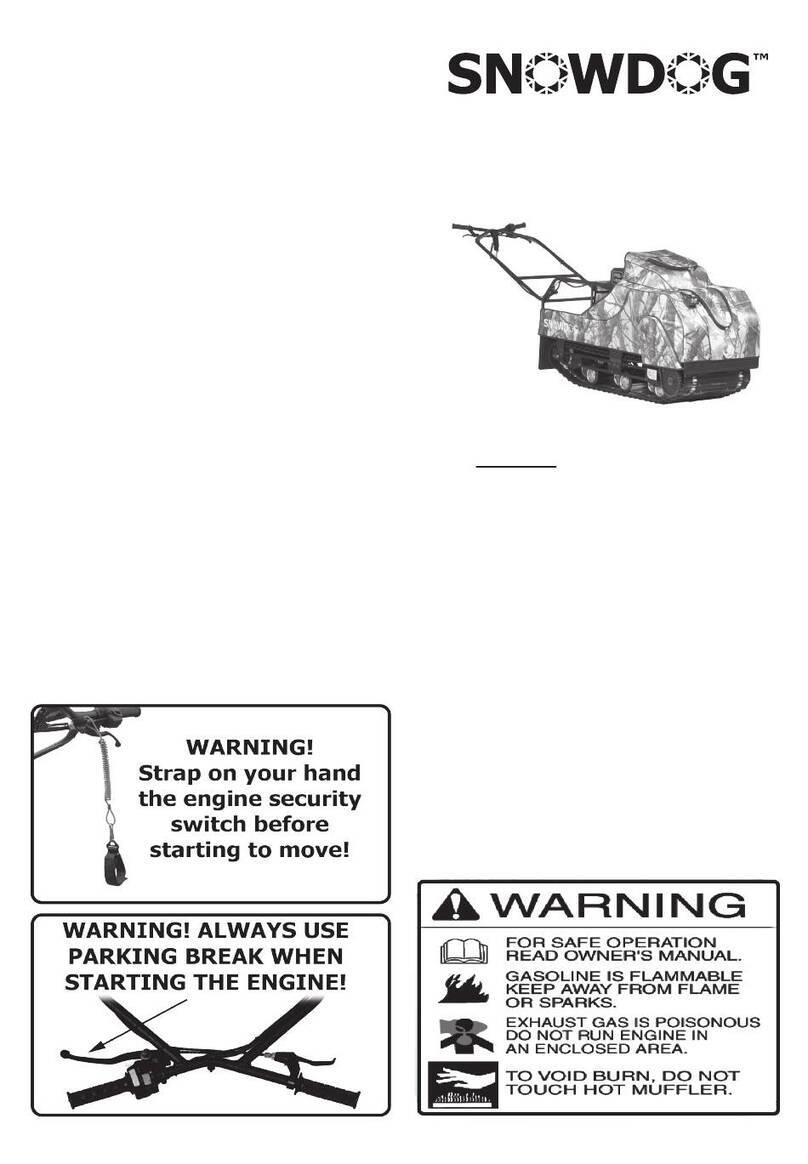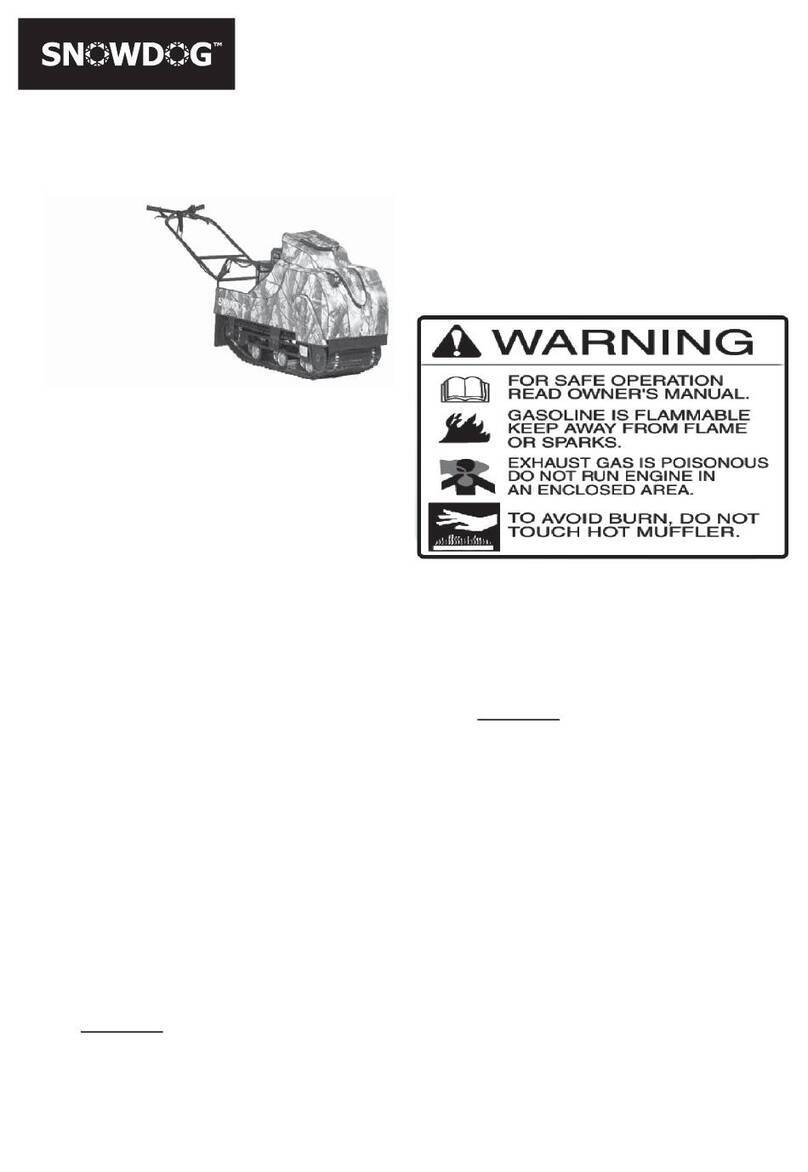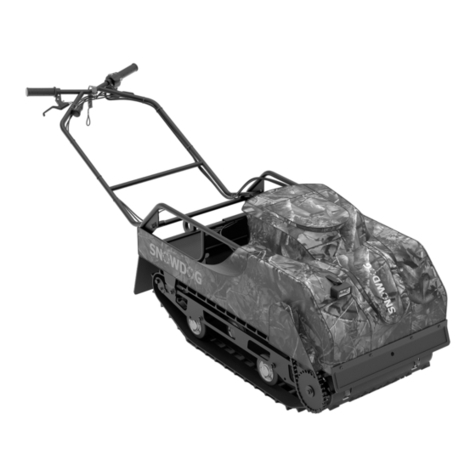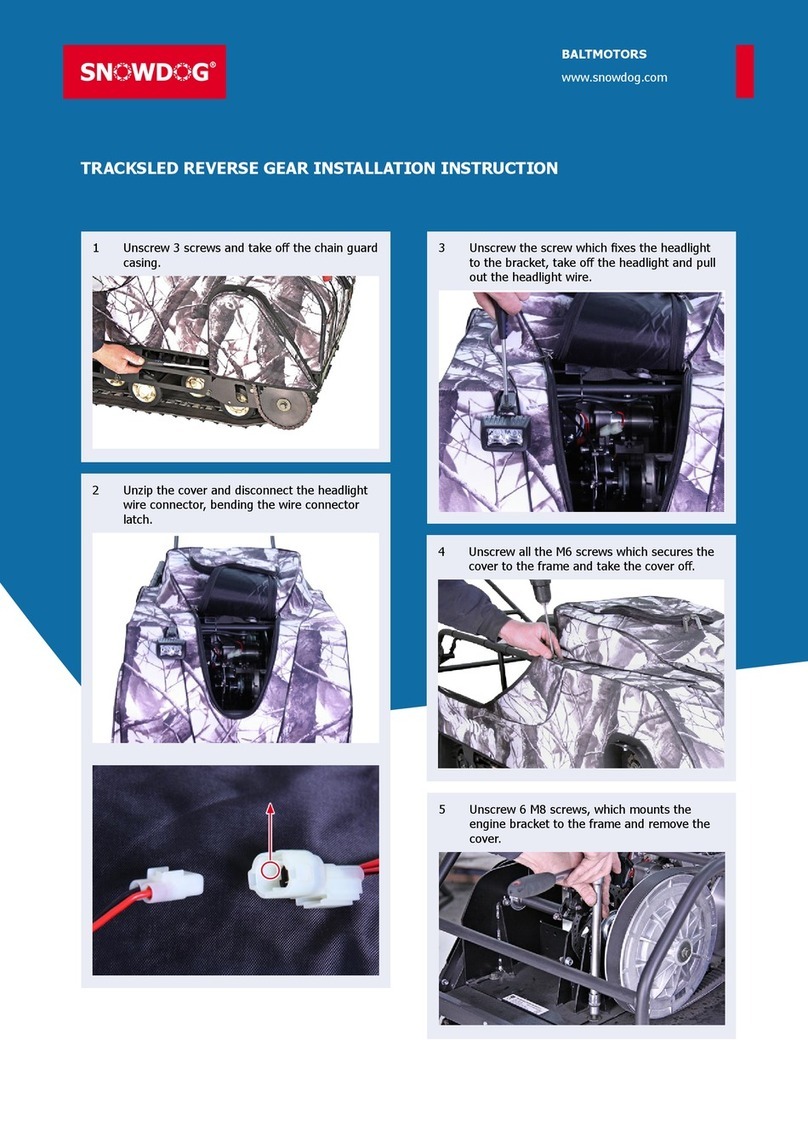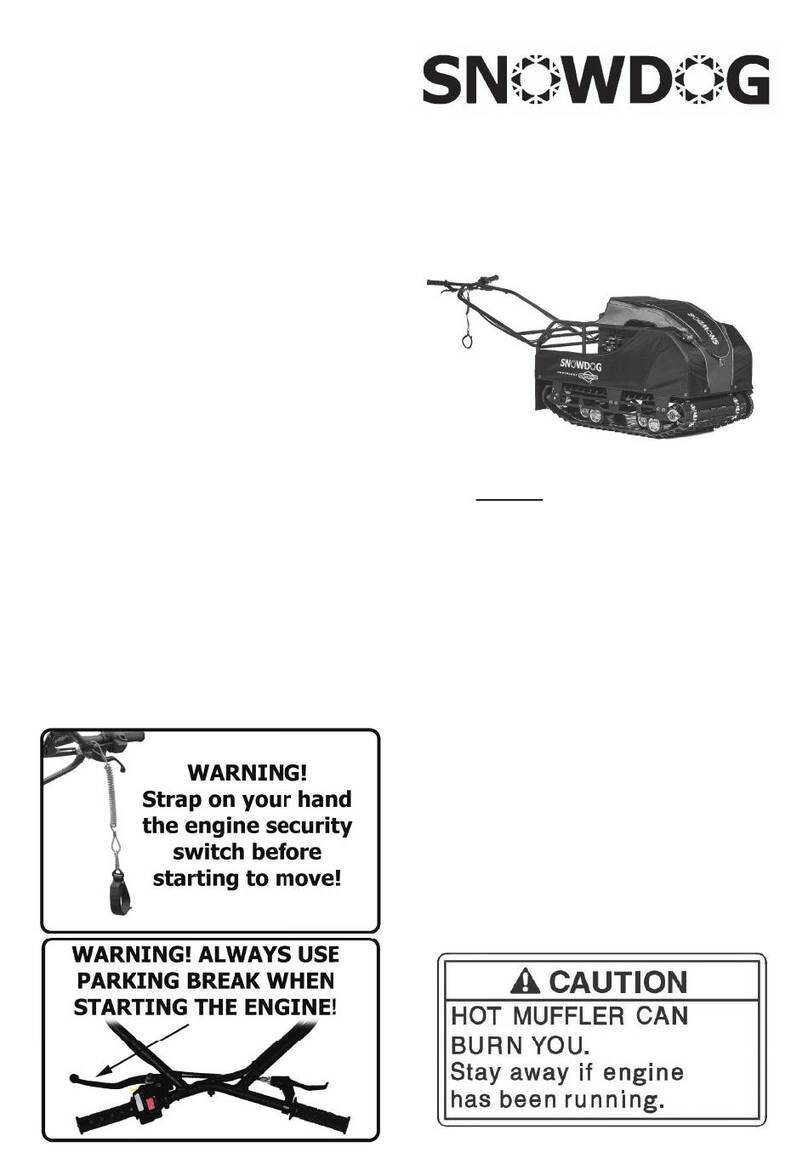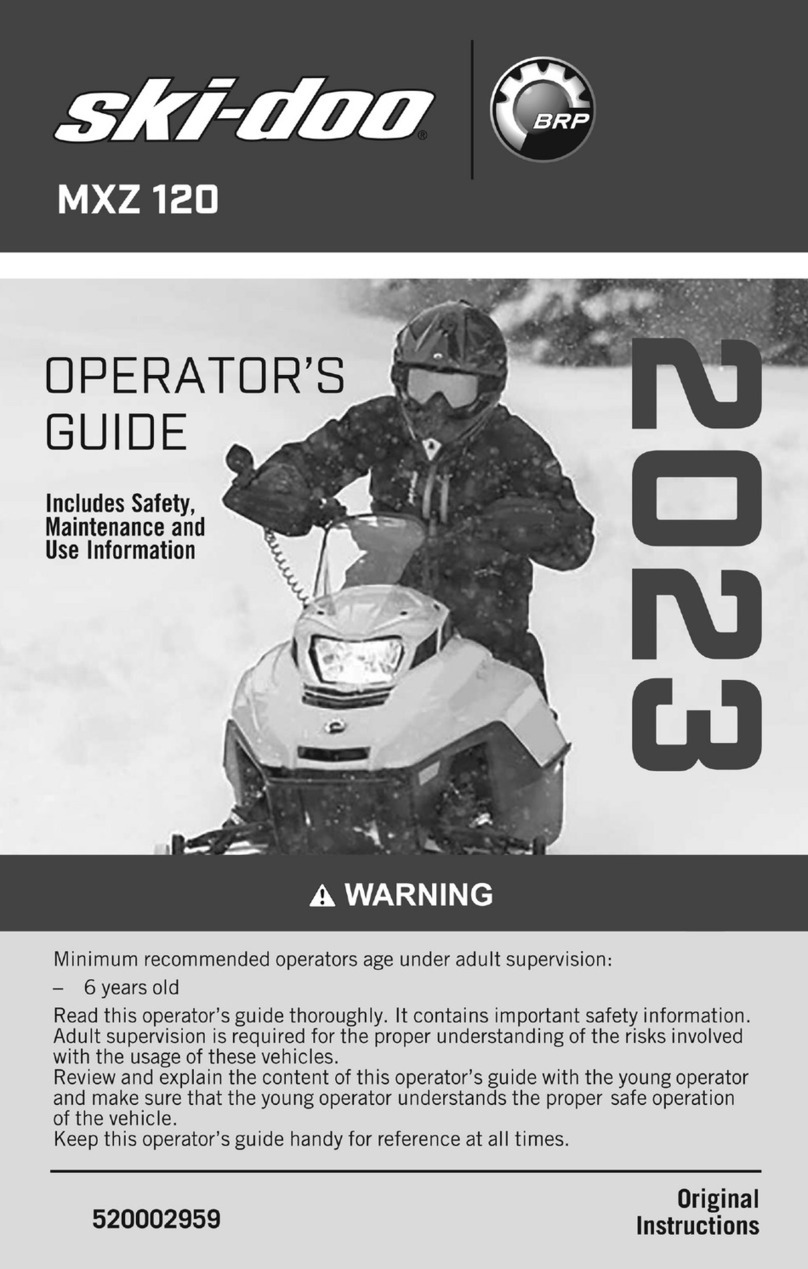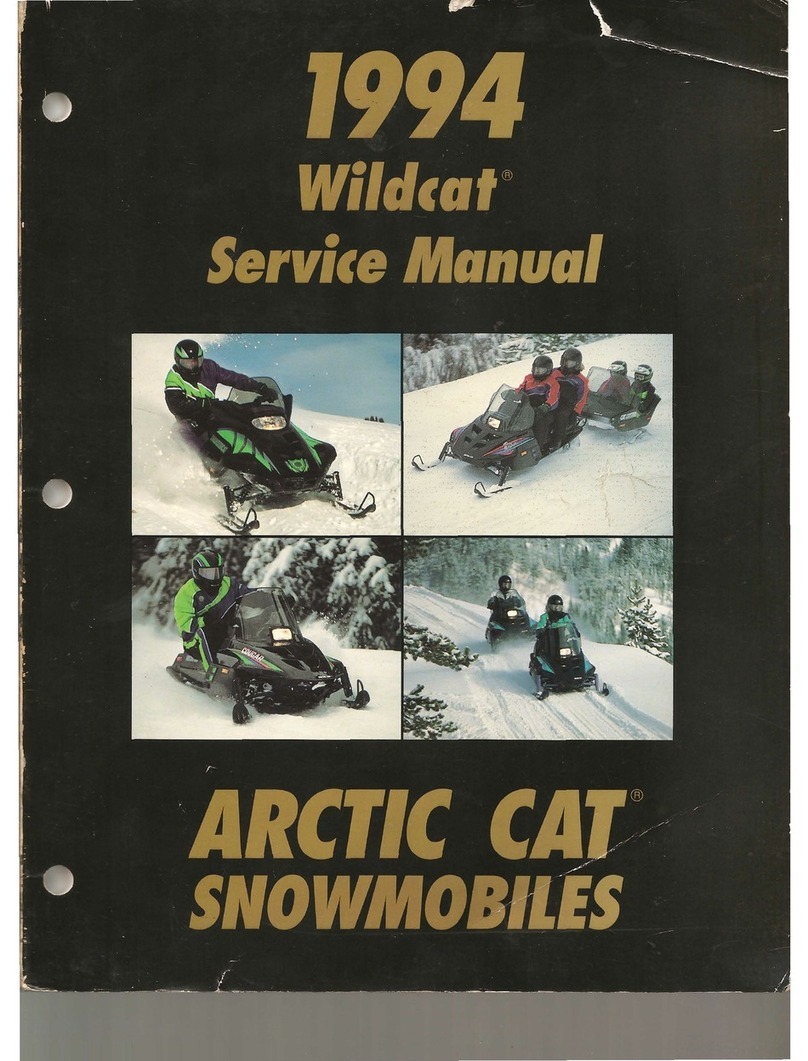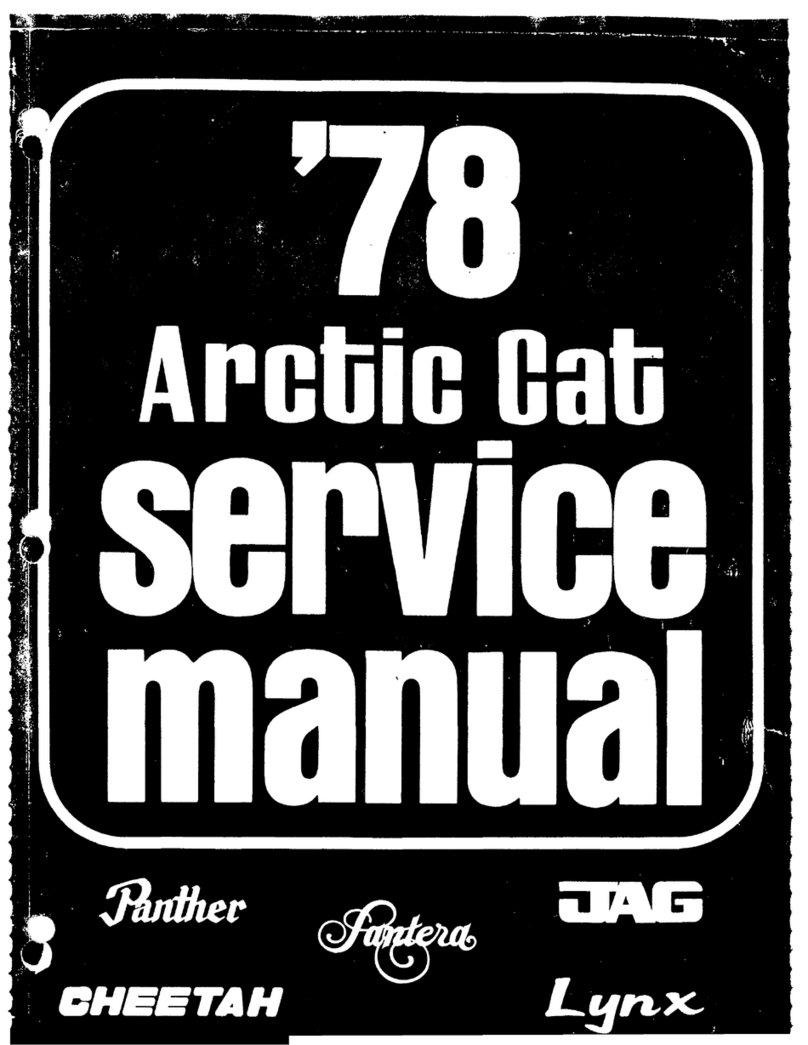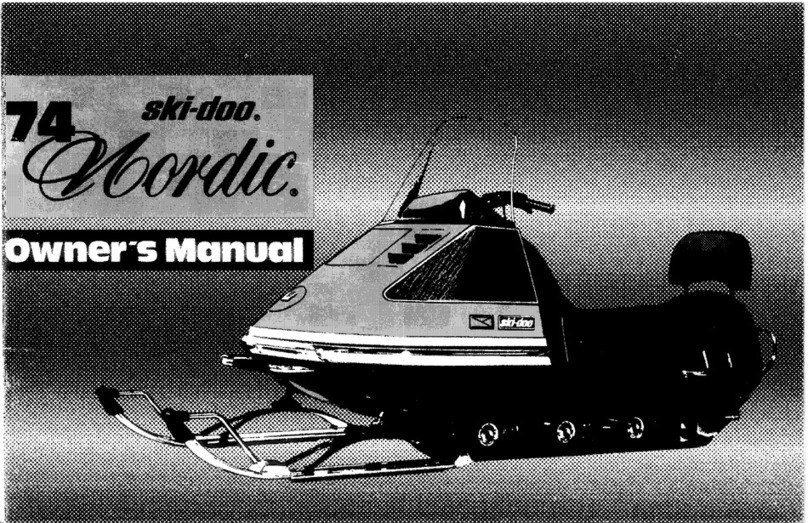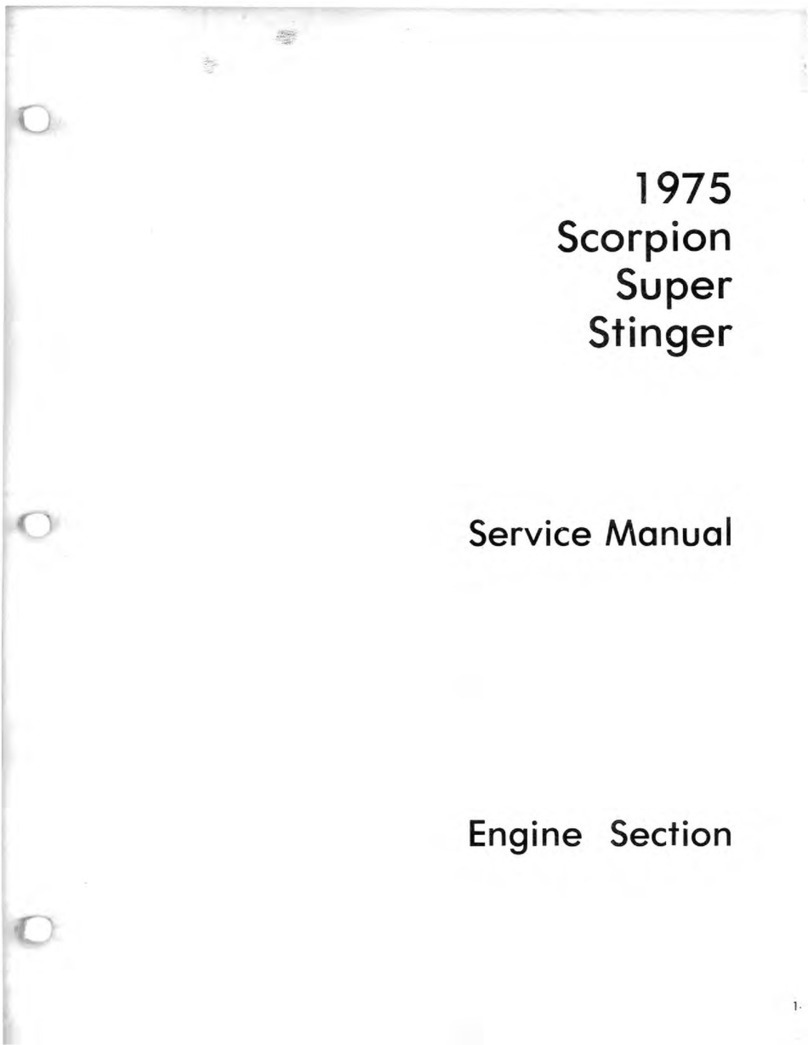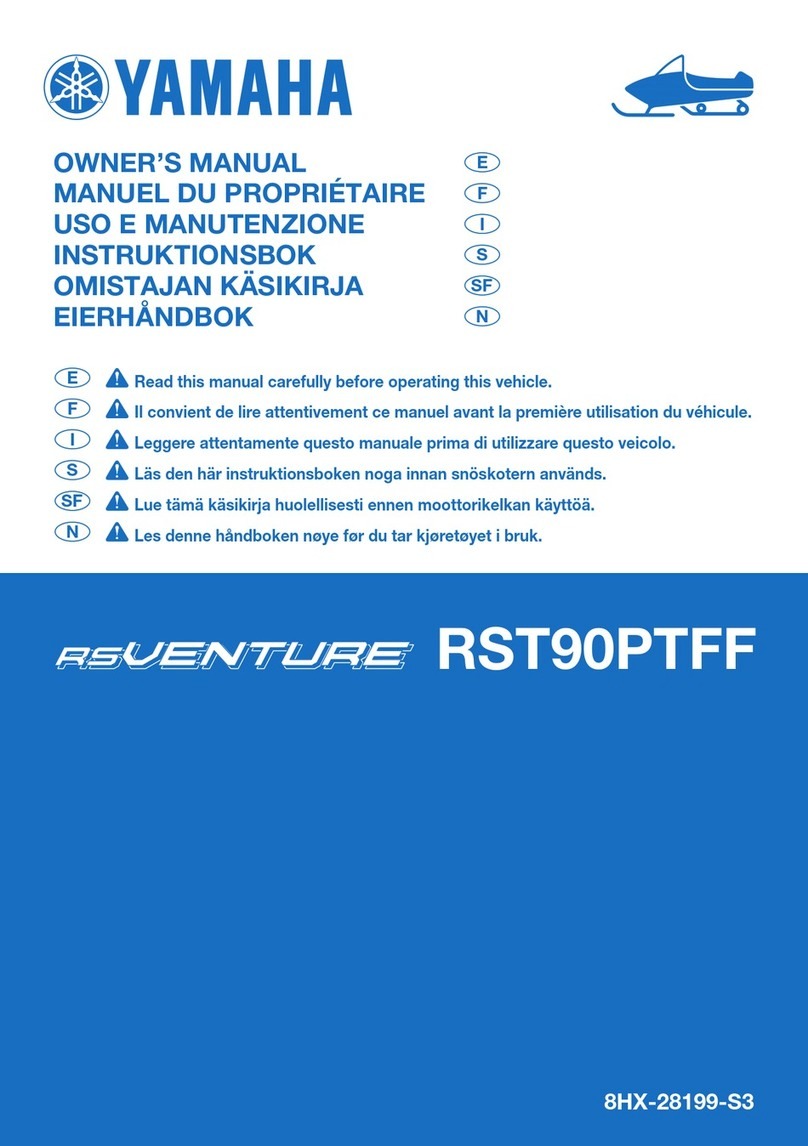
1
Content
1 Introduction������������������������������������������������������������������������1
2 Safety tips����������������������������������������������������������������������������1
3 Technical specifications ����������������������������������������������������2
4 Snowdog purpose��������������������������������������������������������������2
5 Overview �����������������������������������������������������������������������������2
6 Snowdog setup�������������������������������������������������������������������5
7 Operating the Snowdog ���������������������������������������������������5
8 Severe operation conditions ������������������������������������������13
9 Scheduled maintenance �������������������������������������������������14
10 Transportation������������������������������������������������������������������14
11 Snowdog maintenance table������������������������������������������14
12 Storage�������������������������������������������������������������������������������16
13 Manufacturer’s warranty Snowdog �����������������������������16
14 Warranty card*�����������������������������������������������������������������18
15 Service list �������������������������������������������������������������������������18
17 Electrical drawing ������������������������������������������������������������19
1 Introduction
Thank you for purchasing the Snowdog!
Before using Snowdog, please read this manual carefully�
Following technical instructions and safety tips ensure
continuous years of reliable product usage�
Snowdog is a compactly designed and reliable highly
tracksled, equipped with a high-quality Briggs & Stratton
engine and ready for off-road trips or fun�
All information in this manual corresponds to the state of the
product at the date of signing and printing the document�
The manufacturer reserves the right to make changes to
design without prior notice and without any obligations� If a
difference is found between this Manual and your machine,
please contact your Snowdog dealer to get the latest
information�
Service life of Snowdog is 5 years�
2 Safety tips
This Owner’s manual contains important information on
safety tips and operating instructions for Snowdog� In
case of resale, please share this document and the engine
service manual with the next Snowdog owner due to the
importance of the information contained�
Please read this manual carefully before operating the
Snowdog� Non-compliance with the operation instructions
and non-acquaintance with the information in the user’s
manual may cause serious damage and even injuries�
Snowdog operating safety tips and instructions are marked
with “Warning” tag listed herein�
All the information on operating safety tips and instructions
for Briggs & Stratton engine is in the engine user’s manual�
Please read the manual carefully before using the Snowdog�
!Warning
Before operating the Snowdog you must read the
user’s manual and engine user’s manual.
• It is prohibited to operate the Snowdog for minors
under 16 years old, and not recommended to
operate Snowdog for people who are not capable
to operate it safely for different reasons.
• It is prohibited to operate the Snowdog under the
influence of alcohol and/or drugs.
• It is prohibited to use Snowdog without the mud
flaps and emergency engine shutdown switch.
• Operating a faulty or defective Snowdog machine
is prohibited.
• Operating the Snowdog on public roads and trails
is strictly prohibited.
• Snowdog is designed for outdoor use only. Indoor
use is prohibited.
• Park the Snowdog at a safe distance from people
and animals.
• Before starting the engine make sure there are no
people, animals or objects near the Snowdog that
may be damaged or injured.
• Strap the engine security switch on your hand
before starting the engine.
• Before starting the engine make sure the throttle
control lever moves freely and is not fixed.
• Do not start the engine if the handlebar is folded.
• Do not fold the handlebar while the engine is
running.
• Always check out the parking brakes.
• Stay clear of the drive shafts!
• Any maintenance of the Snowdog and the engine
must be carried out only after the engine is shut
off, unless otherwise required for maintenance.
• Make sure all the screws on shafts are tightened
before operating the Snowdog.
• In case of any control malfunctions you should
stop, locate the problem, and fix it.
• Wear protective gloves when operating the
Snowdog.
• Wear protective helmet when operating the
Snowdog.
• Wear ear protectors to reduce the harmful effects
of noise caused by the Snowdog.

